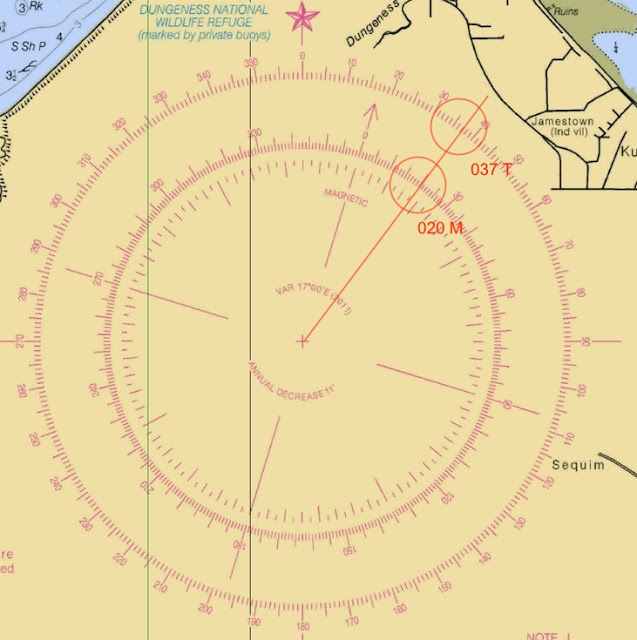A true direction is the bearing of a target from your location measured relative to true north (000 T). True north is the direction on the horizon that is directly below the pole of the sky that all stars rotate about. It is the direction from any point on earth toward the North Pole, the one point on earth that is at latitude 90º exactly. Standing at this point, the true pole of the sky is overhead and every direction from there is south! True north is always placed at the top of standard nautical charts, which are made on a Mercator projection. Due east true is on the right side; due south on the bottom; and due west on the left side.
(Note that true north is not the direction to the North Star, Polaris. Polaris is overhead on latitude 89º 20′ N, so it is about 40 nmi south of the true pole at any time. This makes its actual bearing vary from about 359 T to 001T depending on the date and time of night.)
A magnetic direction is the direction of a target from your location relative to a special direction called “magnetic north” at your location. This direction is not unique, like true north is, but instead varies continuously across the surface of the earth. It is the direction of the strongest horizontal component of the magnetic field at the earth’s surface. In short, it is the direction that any compass needle would point at that location.
Also unlike true north, magnetic north is not the direction to any specific point on earth. If we take a simple hiker’s compass and look at the needle, it is aligning with the earth’s magnetic force lines at this location, pointing to our local value of magnetic north.

David Burch
David Burch is the owner and courses director of the Starpath School of Navigation. An author and authority on weather and navigation, he has more than 70,000 miles of ocean experience ranging from the Arctic ice edge to Tahiti and Australia in the Pacific and from New York to Panama in the Atlantic.






